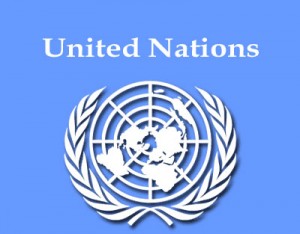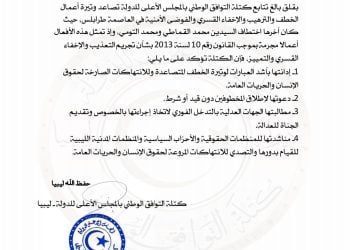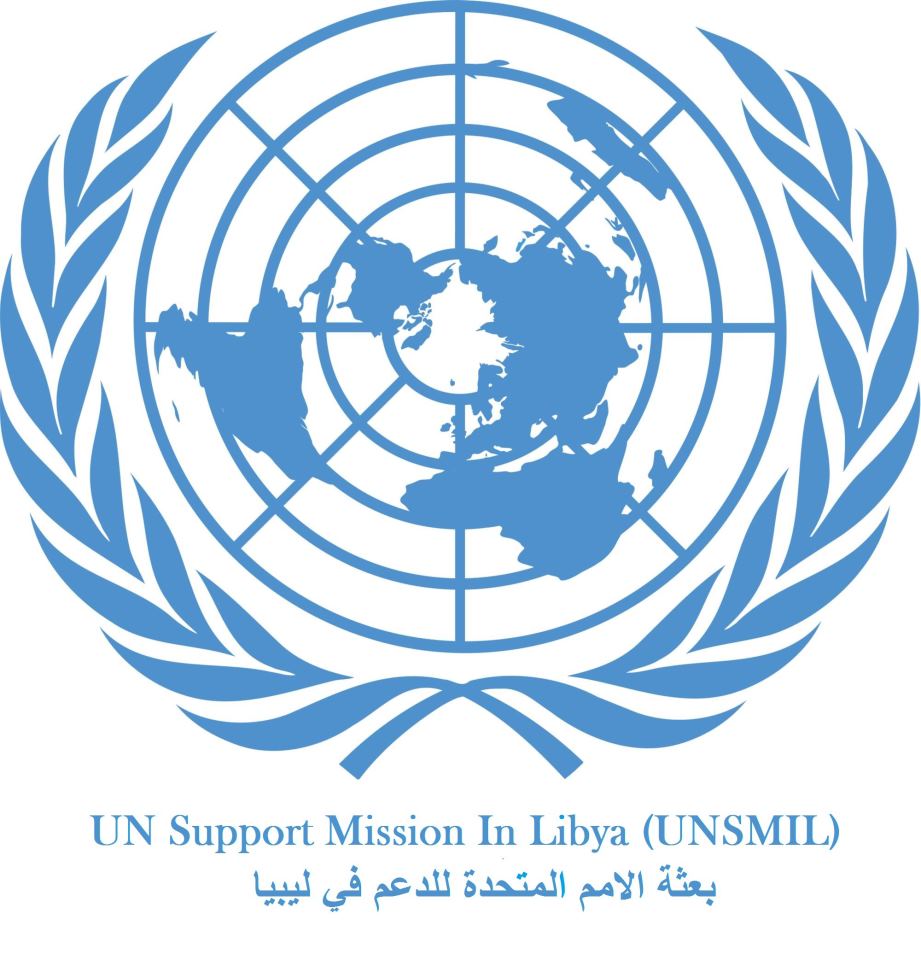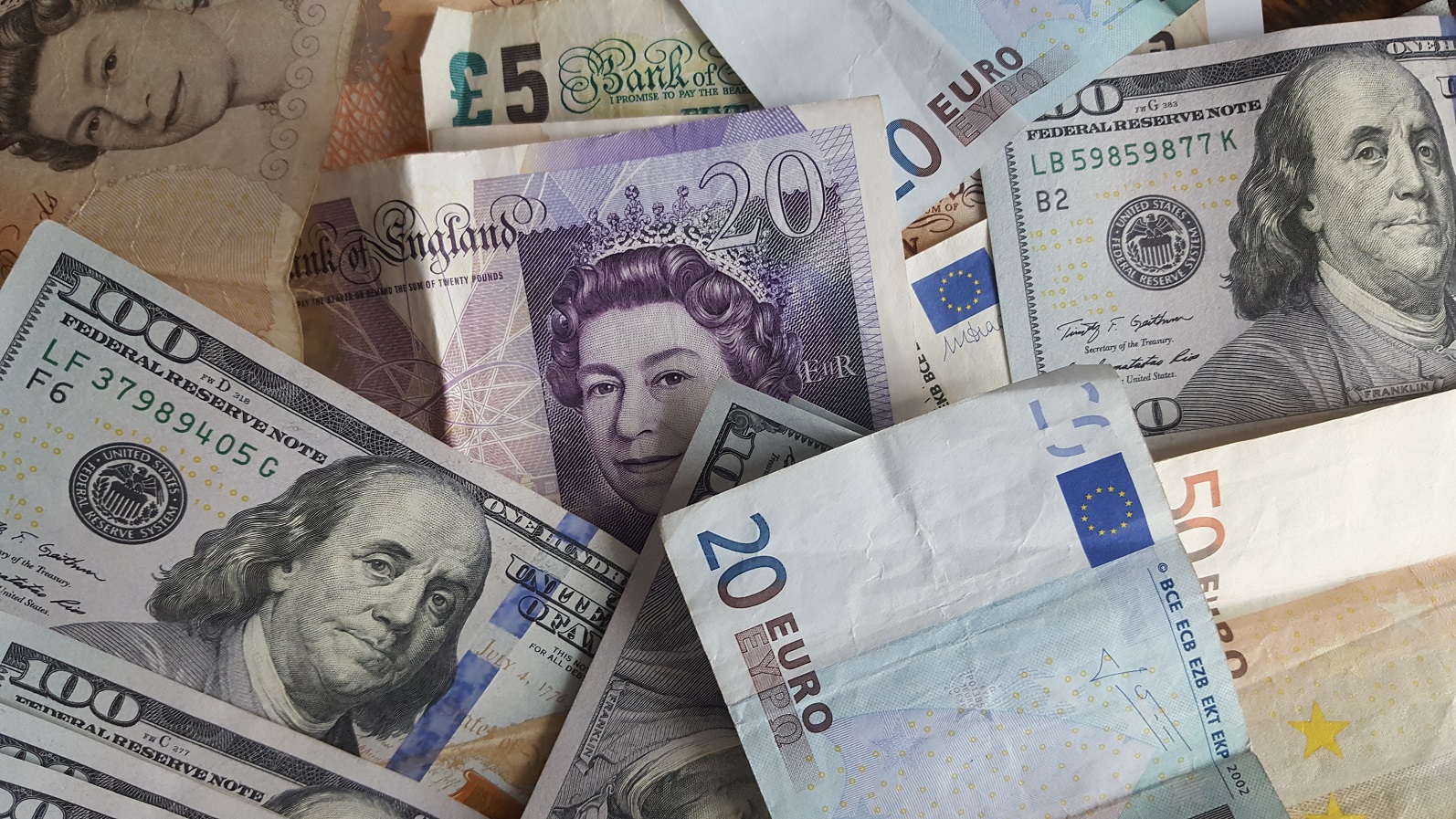By Sami Zaptia:

London, 9 March 2018:
On the topic of the diversion of state funds and financing of armed groups, the 157-page UN Libya Experts Panel report said that ‘‘The launching of operations Dignity and Dawn, respectively in May and July 2014, not only constituted a significant deterioration in the political and security situation in Libya, but also dramatically accelerated the depletion of Libya’s wealth.
The absence of effective control mechanisms, complicity of members of the political establishment and empowerment of armed groups have led to unprecedented levels of diversion. While at first motivated by a will to finance political and military operations, members of those networks have since developed networks of private interests across the board. For instance, letters of credit, debit cards, fuel smuggling, trafficking of subsidized products and extra-budgetary expenses have all been channels of diversion used by armed groups (and their sponsors) to finance themselves through one source: diversion of Libya state funds.
Diversion from public funds
Fuel Smuggling
The 2014 Libyan Audit Bureau report reveals that quantities of refined petroleum products imported in 2013 increased substantially, if compared to 2012. According to several Libyan energy experts, such increase could not be explained by level of internal consumption alone, raising questions concerning the reasons behind this increase.
Quantities of refined petroleum products in 2012 – 2016 in metric tons
| Year | Car fuel | Diesel | Fuel oil | Cooking gas | Kerosene | Total |
| 2012 | 2, 540,213 | 1,415,200 | 88,639 | 71,850 | 1,339 | 4,117,244 |
| 2013 | 3,154,218 | 3,219,259 | 251,358 | 138,986 | 13,679 | 6,777,500 |
| 2014 | 3,269,580 | 4,141,847 | 391,173 | 227,236 | 82,326 | 8,112,162 |
| 2015 | 3,286,404 | 3,252,970 | 307,880 | 223,021 | – | 7,070,275 |
| 2016 | 3,542,803 | 2,146,691 | 862,498 | 223,852 | – | 6,775,864 |
Source: Audit Bureau
According to confidential sources, the budget allocated to import refined petroleum products has reached approximately 5 billion USD as of November 2017. This represents a 71% increase compared to 2016.
Expenditure on fuel imports
| Year | 2013 | 2014 | 2015 | 2016 | 2017 |
| Total US$ bn | 6.6 | 7.2 | 3.8 | 2.9 | 5.0 approx |
Source: Audit Bureau
According to the same confidential sources, of the total amount imported, 43% is used in energy production; 5% is delivered to public institutions (including the Army and various Security Forces); 2% is assigned to Libyan Airlines. The balance 50% is allocated to private consumption. As of November 2017, this has only generated 75 million USD in revenues. In contrast, the estimated income should have reached at least 500 million USD. The difference is indicating the size of the trafficking.
The National Oil Corporation is the sole authority in Libya entitled to conduct petrol- refined products purchasing operations on the international markets. The government allocates the funds in its budget for that purpose. In order to determine the importing needs there is an informal committee, which holds regular meetings, chaired by the National Oil Corporation.
Brega Petroleum Marketing Company, General Electricity Company of Libya, Mellitah Oil and Gas, Sirte Oil Company, as well as cement and steel plants are represented in this committee. Brega Petroleum Marketing Company is a fully owned subsidiary of the National Oil Corporation, responsible for the storage and distribution of oil products. It has a major influence in determining the quantity of refined products to be imported.
Brega’s sole criterion to supply fuel is the market demand, and the company has refused to implement stronger control mechanisms over the four distribution companies that are allowed to purchase the fuel from its facilities.32 Some militias in control of Brega facilities, particularly in Zawiyah and Sebha, exert influence on the Company’s decisions.
The Zawiyah smuggling network is at the heart of these illicit activities. Several armed groups operate in the fuel smuggling and are responsible for the diversion of State funds. Their activities largely contribute to the mounting violence and insecurity in western Libya and, thus, threaten peace and stability in Libya and neighbouring countries. Their actions also drive up fuel prices and deprive the local populations from access to fuel.
Al-Nasr Brigade was put in charge of Zawiyah refinery on 5 July 2014 by the Petroleum Facilities Guards (PFG) commander, the late Colonel Ali al-Ahrash. Since then, Al-Nasr has organized fuel smuggling in collaboration with armed groups in Zawiyah, Sabratha, al-Ojeilate and Warshefana. Most of these groups cooperated with the Libya Dawn operations in 2014 and 2015.
From the refinery to the smuggling tanker, fuel transits through several stages. Since it is in control of the refinery, al-Nasr brigade is in the best position to buy fuel at the refinery at the official market price 0.15 LYD. It uses licences issued by distribution companies or by petrol stations owners according to agreed division of benefits. During the last quarter of 2017, a litre was sold for 0.85 to 1 LYD on the black market in Zawiyah. In Zuwarah, fuel was bought on the black market for 1.75 to 2 LYD, and occasionally up to 4 LYD, which is twenty-six times the official subsidized price.
The Panel obtained further evidence of the collusion of elements of the Coast Guards in Zawiyah and Mohammad Koshlaf.
Letters of Credit
Starting in 2014, institutional corruption has increased in Libya in the absence of effective control authorities. Networks including commanders of armed groups have developed schemes for diversion of public funds, notably through the misuse of letters of credit (LC).
The Audit Bureau estimates the overall amount of issued LC in 2016 to be approximately 5 billion USD. The Audit Bureau lacks the resources to establish the amount of LC that have been misused since 2014. It could only study a sample of LC. It is also due to the fact that as of November 2016, the Central Bank of Libya’s (CBL) Governor instructed its services not to share information on LC with the Audit Bureau.33 However, the Bureau was able in its public reports of 2015 and 2016 to document hundreds of million USD worth of misused LC.
Letters of credit are issued by the CBL through commercial banks in charge of granting them to their clients, who respond to legal and commercial requirements. LC are designed to finance imports to Libya, however they have been misused. Authors of these practices use LC in order to obtain hard currency, which is deposited in foreign bank accounts, or injected into the Libyan black market currency through currency brokers. The growing gap between the official exchange rate and the black-market rate encourages these practices. According to an Audit Bureau sample of misused letters of credits only 14% of the total value corresponded to real imports.
Networks involved use general trade (front) companies, which are ineligible but are yet given LC by banks in disregard of the regulations. The cases below illustrate the involvement of armed groups in this scheme.
The Libyan Foreign Bank and al-Jomhouriya Bank
Two banks are of particular concern. Senior managers in commercial banks mentioned figures to the Panel confirming the scale of these operations to divert public funds. In al- Jomhouriya Bank 10 companies operating on behalf of armed groups based in the area of Tajura in Tripoli obtained LC for a value of 1 Billion USD until February 2016.
In the Libyan Foreign Bank (LFB), the value of misused LC issued by the LFB also approached 1 billion USD until September 2016. Both managers have come under extreme pressure. While the Panel was not able to corroborate these numbers, they still show the scale of these operations.
The LFB and al-Jomhouriya issued dozens of LC, to respectively al-Watar and Hadaeq Tarablus Companies. The companies belong to the same individual, Abu Bakr al-Taher Abu Bakr Bu Sahmein.
According to several sources, Bu Sahmein has developed business links with Haytham al-Tajuri, commander of the Tripoli Revolutionaries Brigade. Armed groups in Tripoli used their influence in Tripoli in order to force bank executives to release LC that are non-compliant with the CBL regulations.
Nader al-Zaydi has been a key person working on behalf of al-Watar Company. He also played a key role in organizing the kidnappings of Amro al-Hajaj, who had pointed out the irregularities related to the issuance of LC by the LFB. He also directly threatened one of the bank’s employees in order to release an LC to the benefit of al-Watar Company.
On 26 September 2016, Amro Yakhlaf al-Hajaj, Deputy General Manager of the Libyan Foreign Bank, was abducted in al-Andalus neighbourhood of Tripoli by a group of men wearing military uniforms. Al-Hajaj was shot in his leg during the abduction. He was detained for 10 days in an informal detention centre in the district of Tajura. Different sources including al-Hajaj himself, indicated that the abduction happened after he received threats for submitting a report to the Audit Bureau, the Attorney General and the CBL on 3 May 2016. In this report, al-Hajaj describes the irregularities that affect the issuance of the letters of credit and other schemes of corruption in the Libyan Foreign Bank.
Senior managers of al-Jomhouriya Bank were also threatened directly by the Tripoli Revolutionaries Brigade (TRB) to release LC to the benefit of al-Hadaeq in 2015. According to testimonies collected by the Panel, Haytham al-Tajuri directly threatened a member of the bank’s senior management. There have been several instances’’.








